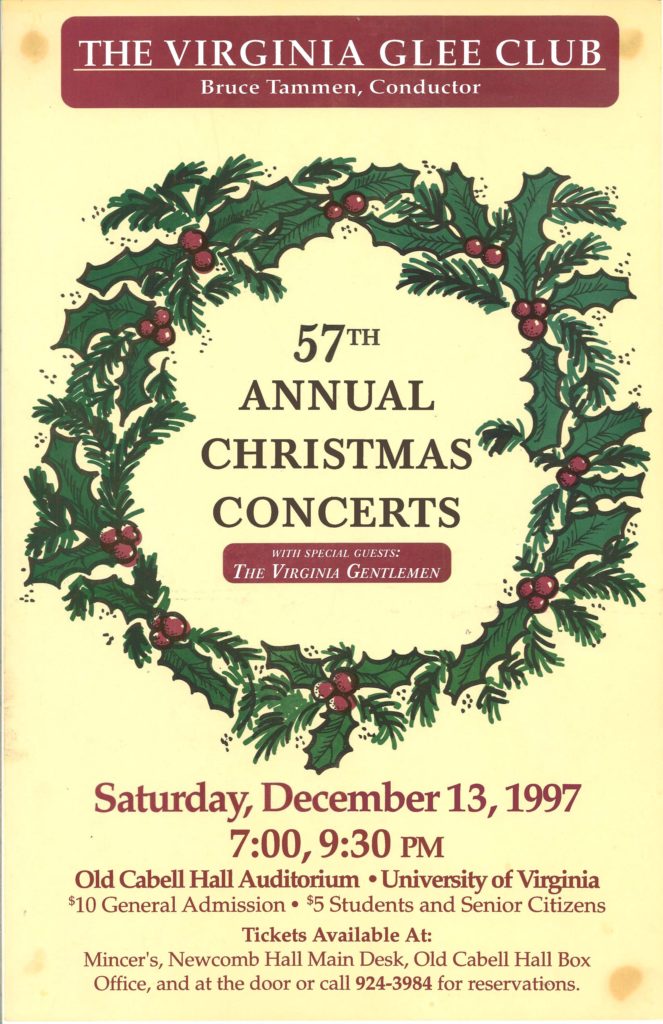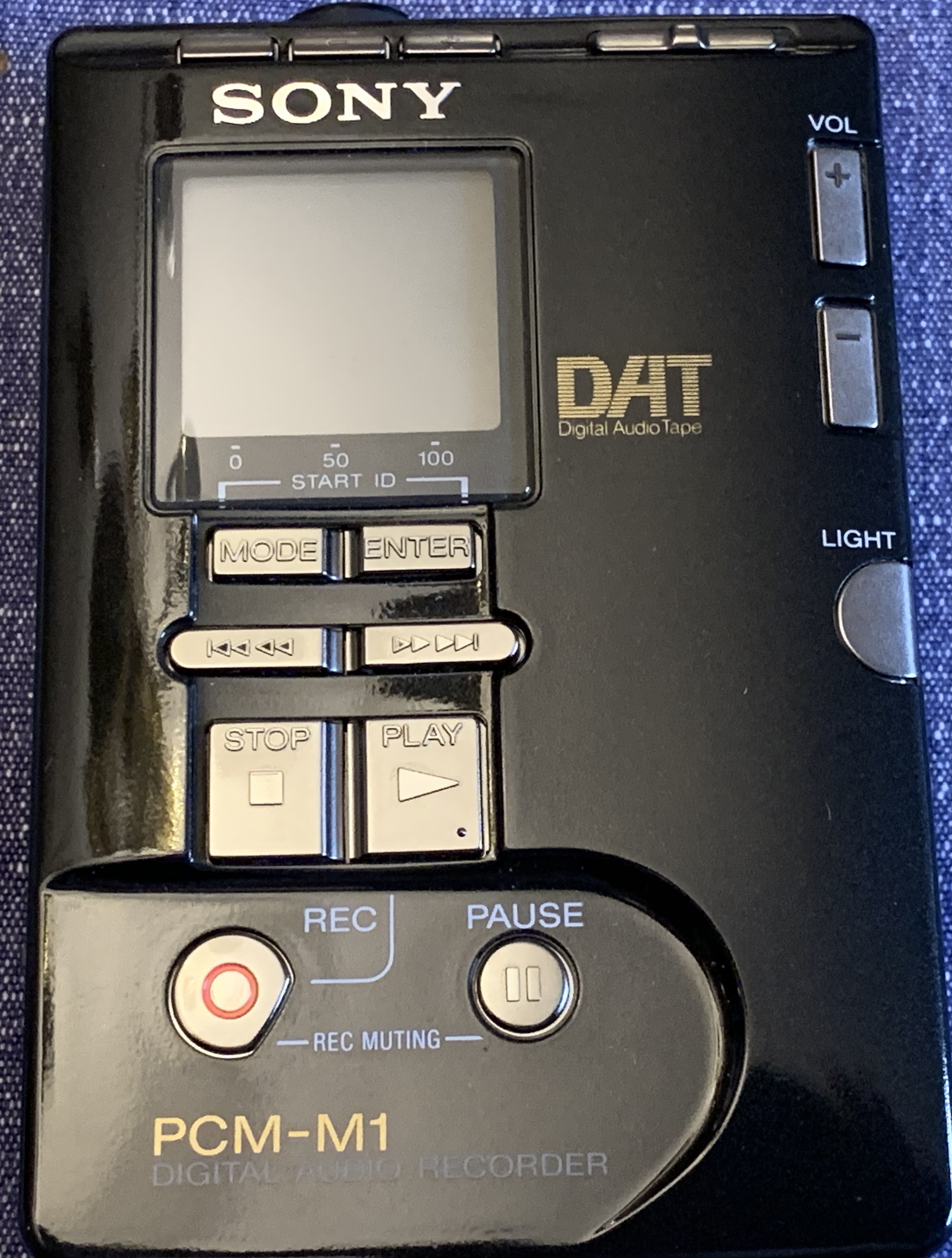
Yes indeed! The mystery DATs were the master recordings from the 7pm and 9:30pm performances of the Virginia Glee Club 57th Annual Christmas Concert! Notable as the Glee Club’s first Christmas performances with conductor Bruce Tammen, the unedited tapes include the full range of a Glee Club Christmas, including audience carols, the eternal struggle between the Four Calling Birds and Three French Hens during the “Twelve Days of Christmas,” solo performances by Jayson Throckmorton, Craig Fennell, Eric Buechner and Bill Bennett, and some seriously moving renditions of favorites like the Gretchaninoff “Nunc Dimittis” and the Biebl Ave Maria. To say nothing of riveting announcements by Glee Club president Drew Cogswell.
I’m going to try to make the whole concert available somehow, but for now here’s a teaser: Club’s performance of the Marvin V. Curtis arrangement of “Go Tell It On the Mountain” from the 7pm show. Enjoy!

